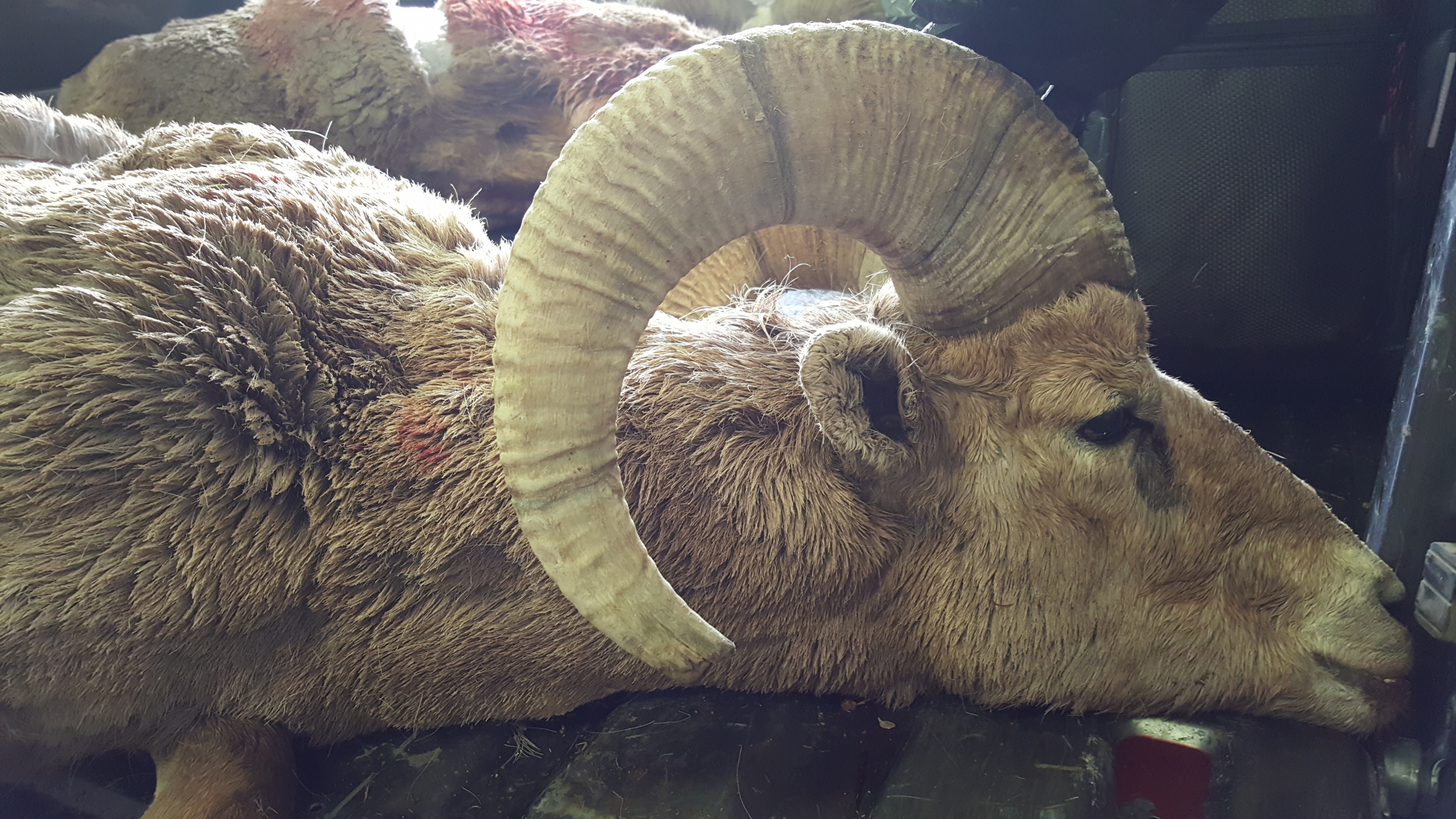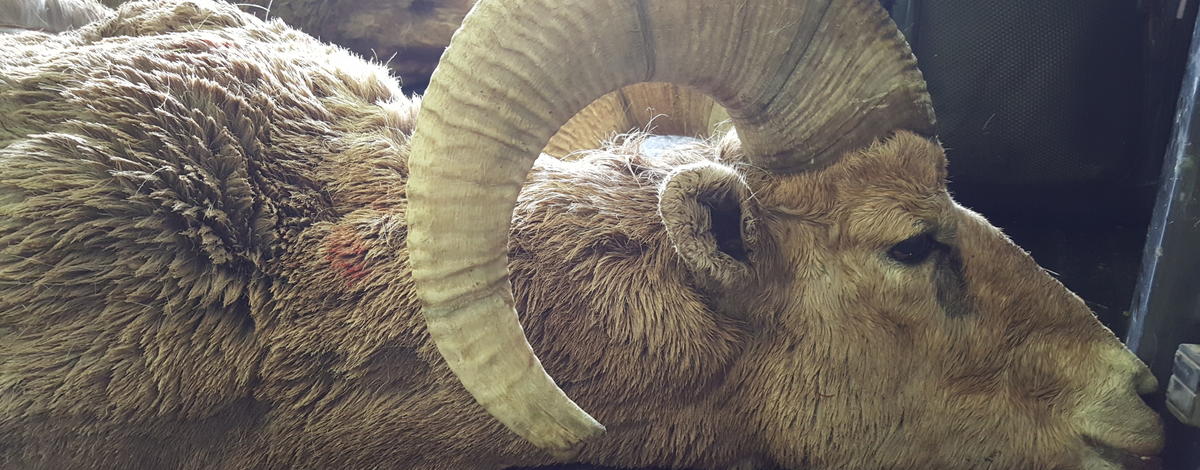Two bighorn sheep rams that were in immediate proximity to domestic sheep near Challis were euthanized Thursday, March 30, to prevent the sheep from potentially carrying disease back to the wild herd. One ram was a five-years-old and the other a six-year old.

Idaho Department of Fish and Game officials euthanized the two rams after attempts to dart and radio collar the animals failed on Wednesday afternoon and Thursday morning. The bighorn sheep were removed from a hillside adjacent to a small flock of domestic sheep on the outskirts of Challis.
Samples were taken immediately after the sheep were euthanized, and the samples and carcass have been transported to a wildlife health lab for analysis.
Because bighorn sheep are susceptible to diseases that can be carried by domestic sheep and goats, the Department’s 2010 Bighorn Sheep Management Plan provides direction that Fish and Game remove bighorns in a timely manner when they come in contact with domestic herds to prevent potential transmission of disease to other bighorn sheep.
Fish and Game received several reports Wednesday that the bighorn rams were seen frequenting an area immediately adjacent to domestic sheep. Biologists responded and attempted to approach the animals on the ground close enough to dart and capture them with the intention of collecting throat and nasal swabs, and radio-collaring the bighorns before releasing them. Ideally, the collected samples would have been evaluated to assess the health of the bighorns. When attempts to capture the animals failed, the most prudent course of action was to euthanize both rams to prevent risk of them returning to their herds and potentially infecting other bighorns. The domestic sheep are also being tested.
Domestic sheep and goats often carry pathogens that wild sheep may be susceptible to and that can result in fatal pneumonia or other diseases. The greatest risk occurs when a wild sheep mixes with domestic sheep or goats and then returns to a wild herd, potentially spreading the pathogens to other wild sheep. In some cases, this can result in large-scale die-offs in wild sheep.
“In a few cases, we’ve lost entire wild sheep herds,” said Tom Curet, Salmon regional supervisor for the Idaho Department of Fish and Game. “More often we see 50 to 70 percent losses, followed by many years of low lamb survival.”
“We regret anytime we have to euthanize a bighorn,” Curet said. “But the risk to wild populations is huge, so it’s definitely the lesser of two evils.”
Fish and Game officials have been, and will continue to work cooperatively with Idaho State Department of Agriculture, domestic sheep operators, and other agencies to develop separation protocols to ensure the state maintains healthy self-sustaining populations of wild bighorn sheep populations.
Fish and Game is currently involved in a research project with Washington State University, University of Idaho, and domestic sheep and goat owners in the Challis area. The goal of the project is to create small farm flocks and herds free of Mycoplasma ovipneumoniae (M.ovi), which is the respiratory pathogen that plays an important role in pneumonia outbreaks and bighorn sheep die-offs. Local involvement with private sheep and goat owners is important to determine if it is possible to create M.ovi free flocks and herds outside of laboratory settings.
For biologists to respond quickly and protect wild sheep, it is important for people to report interactions immediately between wild bighorns and domestic sheep or goats. Anyone who sees bighorn sheep mixing with domestic sheep or goats is asked to contact the nearest Fish and Game office, or the local Fish and Game conservation officer as soon as possible.

